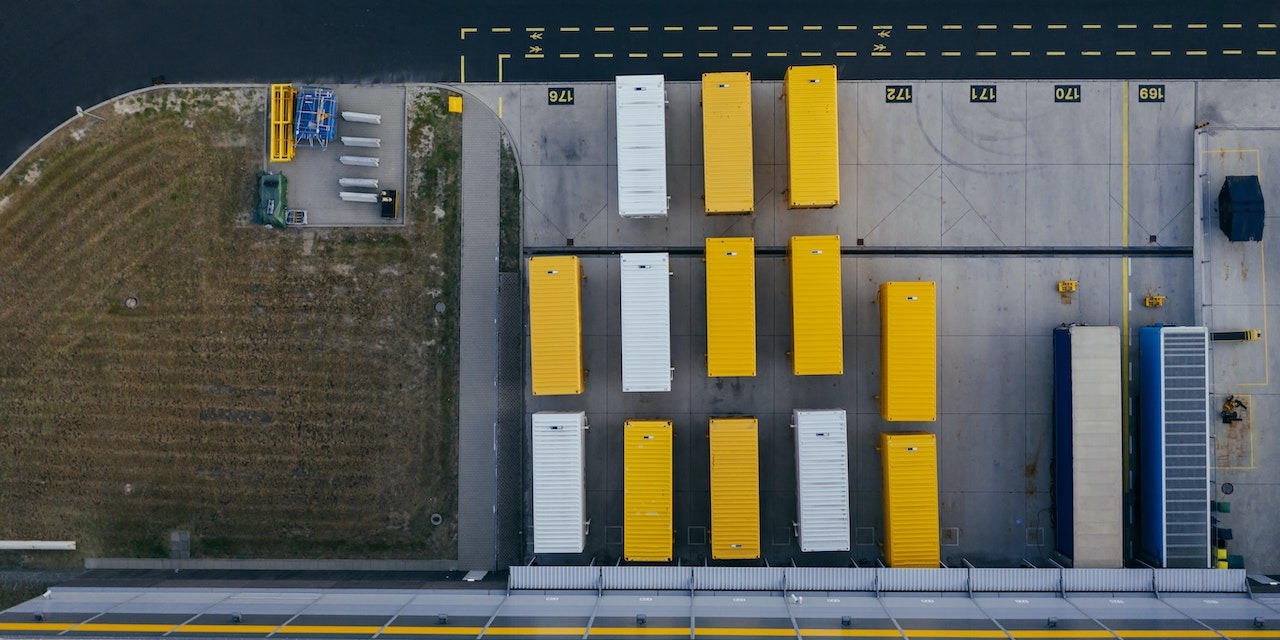In order to answer your request, we are obligated to process the data given above. Sometimes, however, we would like to use them for slightly different purposes, such as statistical data or informing you about our new products and services.We promise that we will use the given information for communication purposes only. We also remind you that you can unsubscribe from our mailing at any time (see Privacy Policy).
The fashion business is doing great and is growing at a tremendous pace; greater demand also means greater challenges in fulfillment and logistics.
Check with us on how to approach this topic professionally.
What do you know about the fashion industry?
The clothing business is one of the most popular in the world. From small boutiques to large clothing shops, everyone will find their target market. People love fashion, its variability, and its seasonality. Clothes are part of an image and individual style, which is why the fashion industry generates such revenues. The value of this industry is estimated to be around $30.58 billion in 2021 for fast fashion and US$108,396 million in 2021 for luxury.
Yet, the fashion industry is also about moving with the times. The eyes of the world have turned to climate change, the overuse of natural resources, and the pollution of the environment by global industry. Customer awareness of clothing production is also increasing. Therefore, fashion brands have placed great emphasis on sourcing recycled materials, which they communicate in their advertising campaigns. Sustainable production is one of the major topics in recent years.
Currently, the market is still growing and is expected to develop steadily over the next few years in large part thanks to ecommerce.
Trends and opportunities for fashion ecommerce
There is no doubt that the situation with the Covid-19 pandemic has affected the clothing industry. Like many other businesses, it has also seen a drop in revenue. At the same time, digital innovation and online sales have gained in significance, opening further opportunities for the fashion industry, like:
Possibility of personalisation
The offered tools enable the creation of product recommendations based on customers' choices. Depending on its sophistication, the indicated personalisation can be based on previous purchases in the same shop, on the customer's location, or even weather. This area is constantly developing using the newest technologies like AI and machine learning. The suggested products may be similar to those already bought or added to the shopping cart.
Social media sales
Sales through social media and mobile devices are the driving force of the fashion market. Thanks to Instagram especially, companies can not only sell their products but also build their brand image. Therefore, the products sold can be accessed at any time from any place. The latest trend that is taking European markets by storm is live sales, originally from Asia. During a live broadcast, customers can view and purchase selected items. It is used by online shops, marketplaces, and shopping platforms.
Global thinking
It is no longer possible to think of ecommerce as anything other than global. International sales becoming a daily reality and consumers are seeking more willingly products from other countries. Every retailer should prepare for this by planning its supply chain, shipping methods, and delivery.
Customer expectations
It is safe to say that today's consumers are more aware than ever before. They are interested in many aspects related to production, the environment, or the values presented by the brand. They look for and choose companies whose products are close to their values and beliefs.
More and more people are paying attention to the quality of clothes and the origin of materials (e.g. natural or synthetic). The sustainability of the industry is key, and those companies that are able to meet expectations can become leaders.
Consumers also expect fashion brands to take a stand on important social issues, such as body positivity and the exclusion of people of different skin colours. They see supporting companies that are driven by a worthy purpose as an expression of their own convictions.
In a world of instant gratification, constant flow of information, and modern technology, customer expectations in the matter of service quality are also increasing. They are constantly looking for new, surprising solutions. Virtual fitting rooms, real-time online shopping, order tracking, or same-day delivery are becoming features that improve the customer experience and retain them for longer.
Those who are quickest to adapt to new needs will certainly be rewarded by clients.
Best storage methods for the fashion
Clothes and fabrics are not considered perishable, but certain aspects of their storage are worth noting.
- Depending on the size of the online shop, the number of selling products, and order volume, there will be a need to secure an appropriate warehouse capacity and inventory management system.
- Clothes that are considered luxurious, made of delicate materials that are susceptible to damage, should be stored on hangers or specific racks.
- For less demanding fabrics, it will be possible to store clothes on shelves, boxes, or containers. It is also worth remembering about suitable storage materials, such as breathable wrappings or silica gel packets.
- Storage conditions should be controlled - the warehouse must be dry and clean, with moderate humidity, without unpleasant odours that might soak into the clothes.
- It is also good to bear in mind peak sales, higher demand, seasonality of certain products, or dynamic growth of the online shop and increasing number of orders. It's worth choosing a flexible storage system that will allow keeping track of orders and stock levels.
How to choose the right type of packaging?
Packing clothes does not difficult. As with storage, you just need to pay attention to the basic parameters.
Size
A common mistake made when packing clothes is to think that the tighter it's packed the better. Stuffing the clothes into packages that are too small will expose them to damage during delivery. The size shall be matched to the volume of the order to ensure that it can be transported successfully.
Type
For clothing and apparel, there are several packaging options to choose from.
The basic one is an envelope with bubble filling. It is very suitable for small orders and clothes with a limited volume, such as single blouses or scarves. Shall protect the order sufficiently.
A comparable solution would be to use a poly mailer. It is often easier to fit the size of an order into a bag rather than the box. They are durable, take up less space than a box, are cheaper, and are available in an eco-friendly version. They work well for small and medium-sized orders.
Another option is boxes. They are solid and available in many sizes, including large ones. Certainly, they are also one of the most elegant options for packing orders, so they are perfect for luxury clothes. It is also ideal for large volume orders such as hoodies, jackets, and coats. With proper protection and the use of fillers, it is also suitable for transporting fragile, brittle, or rigid accessories. An eco-friendly option.
Personalisation
A few paragraphs earlier we mentioned personalisation as one of the options available for ecommerce sales. The same applies to packaging. Except for the use of packaging with the brand logo, it is useful to add information that is important to the customer, such as a receipt, a return or exchange form, a thank-you note for the purchase with the orderer's name. Packaging is also part of the brand image, so it makes sense to choose something original, just like Packhelp's packaging, which can be tailored for your business. Customers appreciate the individual approach and feel valued. Therefore, packaging and preparation become a company signature and building brand experience.
Returns policies for fashion: how to manage?
The return policy is undoubtedly one of the leading aspects of running an e-commerce business.
It sets out the rules according to which customers may exchange or return purchased products.
Such a document makes it possible to systematise return operations: it defines the period during which returns are possible, indicates which products can be returned and under what conditions, as well as those whose returns are not accepted. This is especially important for the fashion industry because items such as underwear or jewelry (e.g., earrings) are often excluded from returns.
On the other hand, the returns also imply the development of a whole series of procedures to be managed. Depending on how many channels the sale takes place in, whether it is online or multi-channel, the process will look slightly different.
Although it is difficult to predict the volume of returns, statistics show that for the clothing and shoe category they vary between 30-40%., so an efficient returns service is essential.
If you are selling through an online shop, you will need to specify where your returns will be sent. Managing returns in-house, beyond the work of the warehouse, can be difficult and time-consuming, certainly when there is a high volume of returns. Looking at it from the customer's perspective, it should be a smooth and easy process.
If you are using a third-party logistics provider, returns may be sent to a warehouse where they will be checked for condition and then returned to sale, recycled, or donated to charity for example. This is called reverse logistics. This solution allows returns to be processed quickly while maintaining stock transparency.
If the sale is multi-channel, including bricks and mortar stores, then customers will also expect to be able to return products bought online in-store. Then the crucial thing is to find the right system (or software) to link the returns that are received in different store locations and those returned to the warehouse, in a way that ensures the efficient management of orders and stocks.
Choosing the right solution is a problem worth thinking about. Furthermore, it affects the reputation and the satisfaction of customers.
How to manage fulfillment for the fashion industry?
The availability of products and their internationality, making one of the most important aspects to stand out from the crowd with the excellent order fulfillment services that focuses on customer satisfaction.
Do you feel that some of the recommendations we have outlined are a problem for you? Need help planning the fulfillment strategy for your business? We are here to help!
We aim to provide the best possible experience for your customers throughout the entire order fulfillment process. We will not only help you to find the best solutions but also to optimise specific phases and choose the right partners.
With us you will release your potential:
- with a single contract, you get a professional service for the entire logistics process,
- if you want to start selling internationally, you will get access to the intelligent Fulfillment Network,
- we provide support and expert advice from the beginning of our cooperation,
- technical assistance for the implementation and integration of our solutions.
How does this benefit your business?
- Save time and creativity for what you specialise in,
- open a new path of expansion for your company,
- reach competitive advantage and grow!
What problems we can eliminate?
- no more troubles with poor order processing,
- no more negotiations, unclear offers, and searches for the right logistics operator,
- no more reliance on big, corporate players only!
Don't wait, let us do the fulfillment for you!





